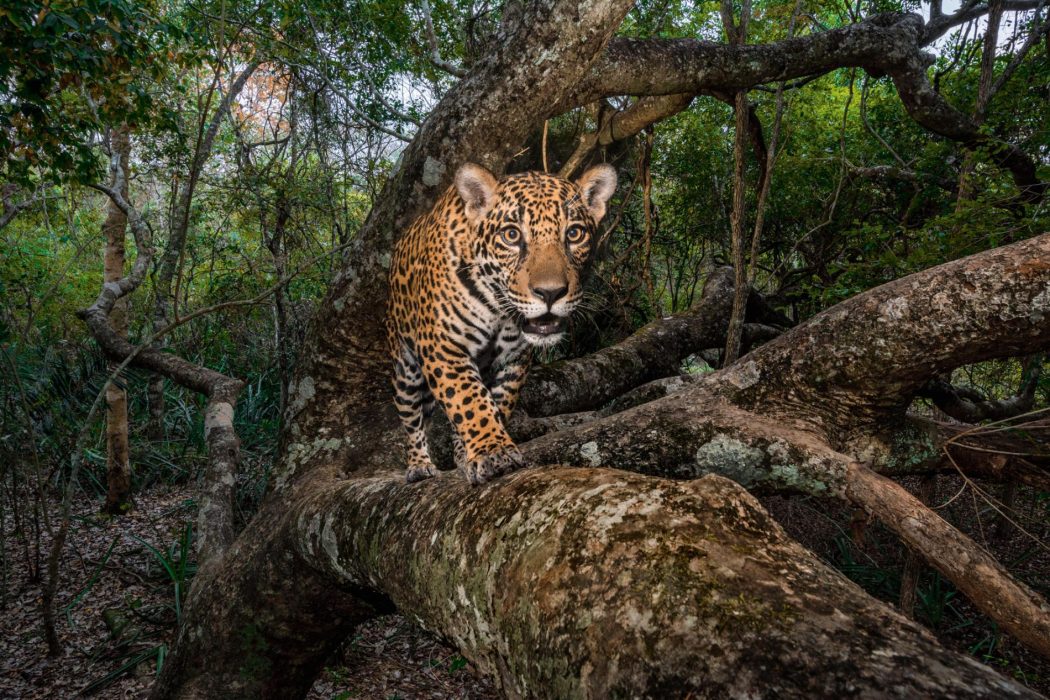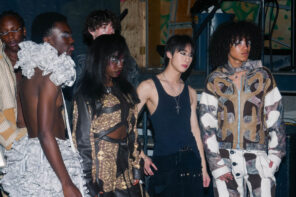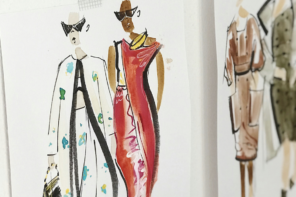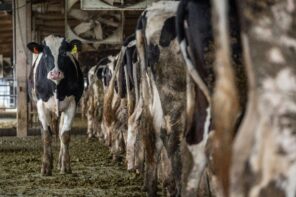I’ve never understood the use of animal-associated clothing. As a child, every time I looked through my grandmother’s closet I would grimace at her vast collection of fur coats, leather gloves, or the emptied fox body hanging amongst her other winter accessories. I thought of such fashion as ignorant and irrelevant – why wear animals when more sustainable materials are at hand? Is the appearance of wealth really more grandeur than saving the planet?
The visual representation of my inner debate was recently presented at Amsterdam Fashion week by 27 year-old Dutch fashion designer, Ninamounah. Despite being a recently debuted brand, Ninamounah has already set a strong definition for their ideal demographic – clothing “for pure and free people, stripped from layers of civilization.” The Spring-Summer 2019 show, Celebration of Species, had a largely animalistic aura. Models of various ethnicities, genders, ages (the show featured an 11 year-old model), and states (it also featured a pregnant woman), marched down the catwalk in a mesmerizing mating dance, wearing poorly cut, ill-fitting, and asymmetric garments that looked as if they were thrown on carelessly, and torn apart as the show progressed.
Watching the show, you can tell that Ninamounah followed primal instincts to create a limitless, genderless, deconstructed and provocative catwalk. Initially, her collection seems shocking, as most big-name designers shy away from such topics, and instead focus on cohesion, harmony, and modernity. Similarly to other forms of art, fashion tends to direct more energy to thinking rather than doing. We step away from our animalistic urges and the reality of life within the animal kingdom to provide greater attention to our technological and moral advancements through notions of the future, sustainability, artificial intelligence, religion, economics, and social justice. By using deconstructed, disturbing garments standing central to the collection, Ninamounah showed that clothing is an accessory rather than a necessity, as our real clothing is our skin. The designer considers fashion a constraint, limiting us from our primal urges as garments distinguish us from animals.
Watching the show, you can tell that Ninamounah followed primal instincts to create a limitless, genderless, deconstructed and provocative catwalk.
At the same time, Ninamounah’s animalistic, genderless collection is highly reflective and relevant towards our current society, especially as we move towards social, economic, and environmental equality; as the collection presents human beings as just another wild species roaming Earth, it teaches us that sustainability can be achieved through equality and peace with our animal neighbours. Clothing, like other retail products, should be made using sustainable and recyclable materials rather than cheap fibers such as nylon or polyester.
Fashion retail pollutes our Earth more than almost all other industries today. Specifically, the realms of fast-fashion and it’s mass consumption have taken a toll on the environment as brands become more accessible, sell at lower price points, and use higher quantities of lower quality materials. Many garments are made from polyester, which is essentially a plastic, that takes up to 200 years to breakdown, while wool clothing leaks ammonia as it composts in landfill. Dyeing textiles is the second largest method of polluting clean water globally, and toxic chemicals used by many international brands are hazardous, disruptive to hormones, and carcinogenic. Fashion is also disruptive of animal lives. Plastics in garment material are harmful to aquatic life, as small creatures eat polluted microfibres, move up the food chain, and eventually pass toxins on to larger fish consumed by humans. Plus, animals are still selectively breaded and slaughtered in mass-production firm farms (China produced 35 million mink pellets in 2014, followed by 17.8 million produced by Denmark).
At the same time, the rise of eco-friendliness and the necessity of sustainability has successfully translated into most other industries. Whether that is simply to profit off the trend or to actually make an attempt at protecting the planet, the automobile, manufacturing, energy, freight, big data and technology industries have adapted their business ethos’ to operate more in line with the ‘green’ trend. This is a wonderful step towards a cleaner, healthier, and more viable future of planet Earth – but is it enough? Perhaps the fashion retail industry must too, contribute towards the hopeful changes in society and business.







